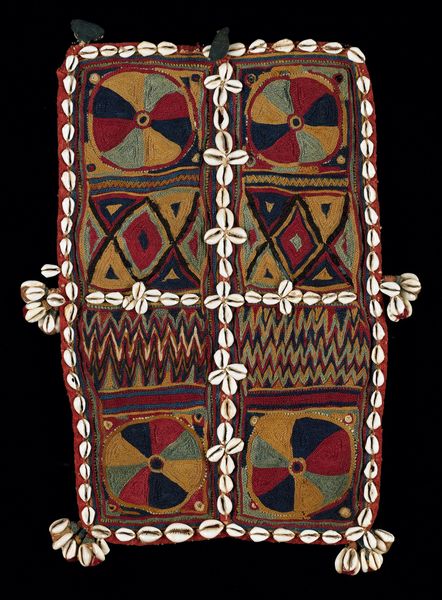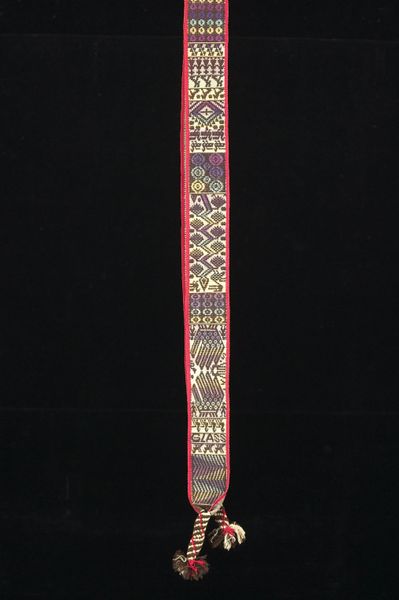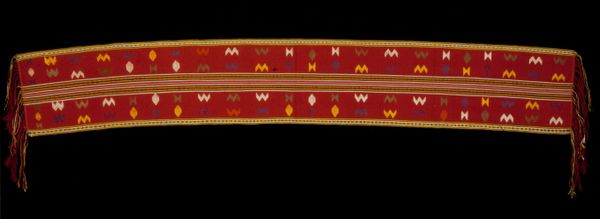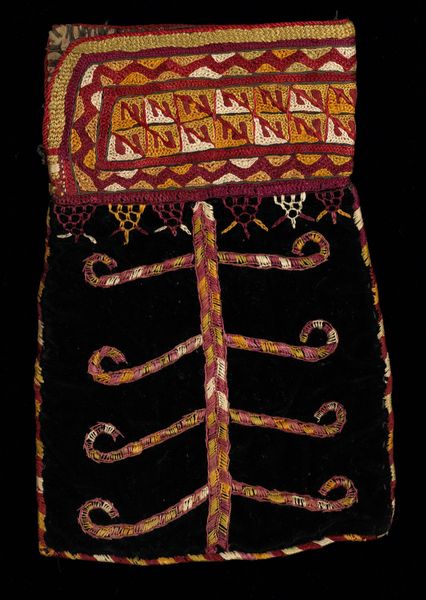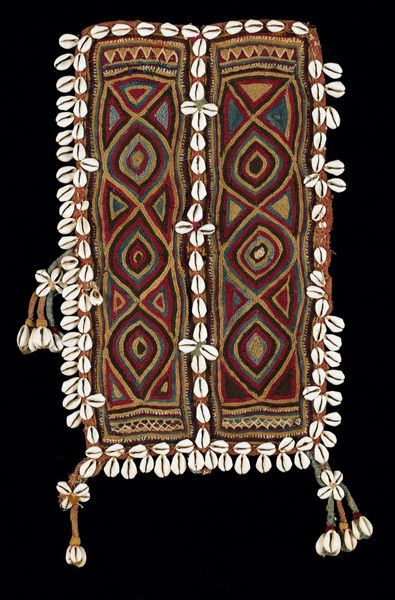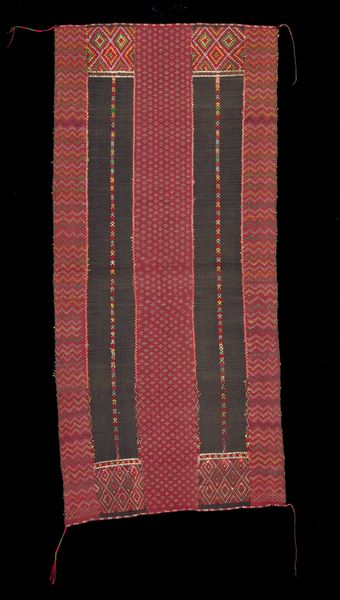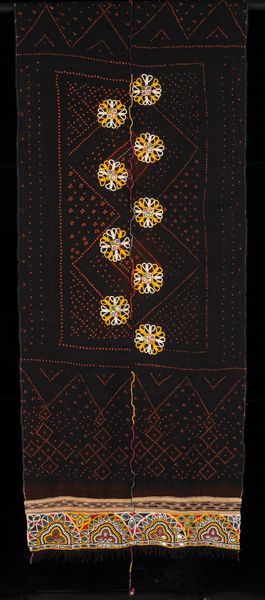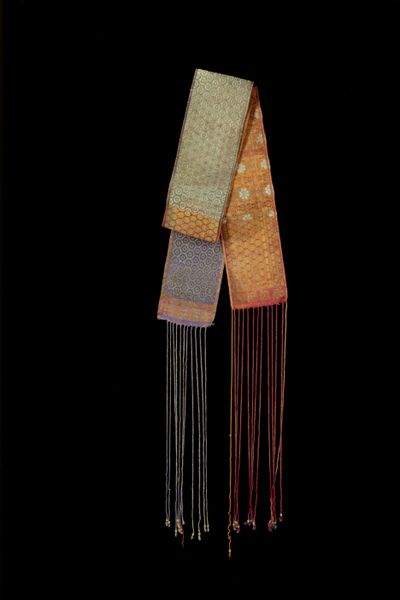
sculpture
#
geometric
#
sculpture
#
beaded
Dimensions: 54 x 8 1/2 in. (137.2 x 21.59 cm)
Copyright: Public Domain
Curator: This is an "Elephant Mask" created around 1900 by the Bamileke people. You can find it here at the Minneapolis Institute of Art. Editor: It's visually striking, I must say. The rigid verticality combined with those radiating discs around the head create a fascinating tension. The beadwork itself seems incredibly meticulous. Curator: The geometric patterns are so important. Diamond shapes, for example, are laden with symbolic weight. They represent the leopard, a vital power symbol, so the mask embodies status and rulership. Editor: Indeed. The restricted palette – primarily white, red, and blue – underscores the inherent structure. Each bead functions almost like a pixel, collectively forming these symbolic arrangements. What a feat of organization and artistry! Curator: The long, flowing panels accentuate the dancer's movements during ceremonial performances, imbuing the masquerade with even greater spectacle. The visual language really is one of power and tradition. To wear this is to embody a significant role in Bamileke society. Editor: I am drawn to the interplay of tactile materiality with abstract form, though. There is a tension. Curator: In what way? Editor: It both compels the wearer’s persona and extends an implicit language of geometric symbols outward from the self, as performative gesture, and in doing so invites us to observe how it has become a material signifier and extension of culture. Curator: I find it fascinating how something can be so intimately tied to personal identity while simultaneously serving as a vessel for collective memory and shared values. Editor: It certainly challenges conventional definitions of portraiture, wouldn’t you say?


